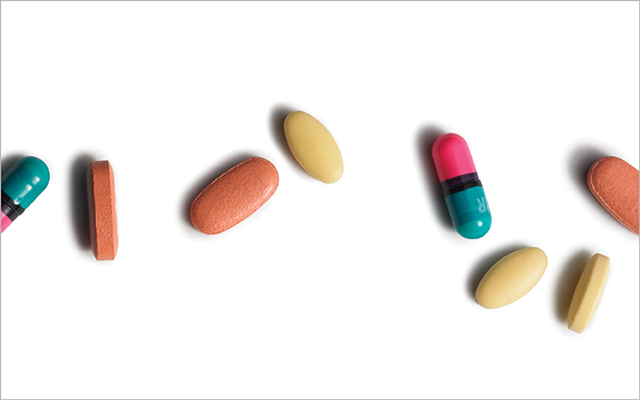I was running low on one of my meds the other day, so I phoned the Walgreens robot and learned it would be ready for me to pick up in a couple of days. It’s become a pretty banal routine in the months since I tumbled into the Big Pharma vortex — make the call, walk over to the store, stand in line for a few minutes, pick up the drugs (no charge!), and get on with my day — so I tend to take for granted the pharmacy’s ongoing existence across the street from my office. Recent news reports, however, suggest that my sanguine attitude may be misplaced.
Major drugstore chains are shuttering outlets across the country at an alarming rate. As Aliss Higham reports in Newsweek, some 1,500 pharmacies have been closed or lean precariously over the chopping block, creating widespread “pharmacy deserts” and forcing millions of seniors to choose between traveling long distances to collect their prescriptions or simply stop refilling them. And the forces pushing this corporate retrenchment — rising drug prices, debilitating lawsuits, and a dwindling workforce — promise to only grow more vexing.
Higher drug prices burden the pharmacies, which struggle financially to maintain an adequate inventory, as well as their customers, who may curtail their dosages and thus deprive the stores of needed revenue. Meanwhile, lawsuits charging the major chains with facilitating the ongoing opioid epidemic have cost them dearly in recent years: CVS, Walgreens, and Walmart have paid a combined $13 billion to settle various legal actions; similar liabilities thrust Rite Aid into bankruptcy last fall. And workforce rebellions have disrupted operations at a time when the chains are facing a diminishing supply of newly minted pharmacists.
A report from CVS Health puts the workforce issues this way: “Despite increasing demand for services and opportunities for growth in community pharmacy, fewer people are drawn to the profession. Although 15,000 PharmDs graduate from pharmacy schools each year, enrollment has declined significantly over the years, and the industry is grappling with high levels of burnout.”
It’s almost gloomy enough to spark a rise in the demand for antidepressants. But never fear, Eli Lilly is here to help.
The Big Pharma giant in January launched LillyDirect, a one-stop online shop where consumers can buy Lilly drugs directly from the manufacturer — no independent pharmacists required, no brick-and-mortar drug store to support. Patients consult with a physician from Form Health, a Lilly-approved telehealth network, secure the prescription, click to the Lilly website, and make the purchase. The drugs arrive at your door via a Lilly delivery service.
“We’re used to buying consumer goods directly from manufacturers all the time on online websites,” Lilly CEO David Ricks tells NBC News. “It really hasn’t been an option that’s been provided before” for prescription drug sales.
It’s probably just a coincidence that Lilly launched the service less than two months after the Food and Drug Administration approved the company’s new weight-loss drug, Zepbound. And that may partly explain why LillyDirect’s offerings are rather limited: Only their obesity, diabetes, and migraine medications are available. Plus, Zepbound and Mounjaro, prescribed for diabetes, happen to be the same drug (tirzepatide) marketed under different names. Each of them has been shown to help patients shed pounds, thus joining the enormously lucrative weight-loss market. Why they’ve included Emgality, their migraine pill, in this mix is anyone’s guess.
If you’re wondering how a collection of online physicians working for a company under contract with a pharmaceutical monolith might manage to retain a modicum of independence when determining whether a patient needs the monolith’s product, you’re not alone. “What fuels my skepticism is that the stakes are so high,” says Arthur Caplan, PhD, chief of medical ethics at NYU Langone Medical Center. “There’s so much money that’s going to move with these injectables. That creates at least the appearance of conflict of interest.”
Not to worry, notes Form Health CEO Evan Richardson. None of his physicians or his company will receive any payment for prescribing Lilly’s drugs. And the firm has established guidelines to ensure that only those patients who really need the medications will get a prescription. Physicians will review the patient’s medical records, check their driver’s license to see that it matches their height and weight, and even send a scale to them so they can confirm their current poundage.
“[It’s] an important aspect of what we do,” Richardson says. “It’s important not just for patient health, but it’s also important for the system.” With the demand for these weight-loss drugs currently outstripping supply, he notes, only the people who really need them should get access.
That’s if they can afford them, of course. LillyDirect doesn’t accept most insurance (thus avoiding annoying price negotiations), limiting their Zepbound clientele to those who can shell out the $550 a month in perpetuity for the promise of a slimmer profile. That’s about half the drug’s list price, but it’s still a stretch for most household budgets. And Medicare recipients needn’t log on to the site; they don’t qualify for the discounts.
This one-off drug shopping also raises concerns about what Saurabh Chandra, MD, PhD, of the Center for Telehealth at the University of Mississippi, calls “fragmentation of care.” When various physicians are prescribing meds for the same patient, they may not be aware of the potential for harmful drug interactions. “Many of the patients do not know themselves what medications they are on,” he explains. “Many times, they don’t know what the side effects or what the adverse effects may be.”
Despite these concerns, LillyDirect will likely spawn similar efforts by Big Pharma heavyweights to join the direct-to-consumer club, thus bypassing the often-fraught interactions with insurance companies and pharmacy benefit managers. But, as Benjamin Rome, MD, MPH, who researches prescription drug economics at Brigham and Women’s Hospital, writes in a recent JAMA editorial, it will do nothing to save the struggling pharmacy industry or improve our ability to get the medications we need. “If the goal is to make it easier and less costly for patients to access their medications, direct-to-consumer marketing by drug companies is almost certainly not the answer,” he argues.
But he does point to a few steps policymakers could take to move the industry in the right direction. They could push insurers to better communicate coverage decisions and costs at the time physicians write a prescription, establish a standardized method for pharmacists to notify prescribers when a patient is unable to get their medication, and grant pharmacists the ability to work with patients to choose cheaper alternatives to prescribed drugs. Congress, meanwhile, could expand drug-price negotiations beyond the handful of medications covered in the Inflation Reduction Act.
“The new class of antiobesity medications is a prime opportunity,” Rome concludes. “Currently, Medicare excludes coverage for antiobesity drugs. Congress could allow Medicare plans to cover these drugs, contingent on companies agreeing to negotiate their prices.”
While that may induce a few headaches among Ricks and his Eli Lilly colleagues, at least there’s a ready supply of Emgality at hand. They wouldn’t have to find a pharmacy, and they’d probably even get it at a discount.




